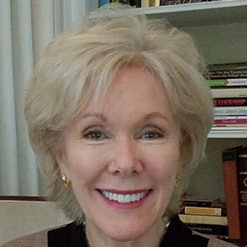 Dr. Pamela Stegeman
Dr. Pamela Stegeman
We found that these partnerships require a long-term, holistic approach with prosperity of the community being the shared primary goal. Specifically, the study found: Dr. Terry Calaway
Dr. Terry Calaway
1) Partnerships are not focused on a single activity but on a broad range of issues important to the region. Colleges and EDOs must approach the partnership as a strategic endeavor with the potential to fulfill multiple goals. Every partnership is engaged in business attraction, business growth, and workforce development activities, but they also collaborate on one another’s initiatives.
2) Communication is a cornerstone of the partnership, with the resulting trust being paramount to their success. Participants recognized the importance of honest communication across organizations. Each partner approached the work as collaborators, not competitors. They communicated regularly in formal and informal means because of the breadth of activities. Participants described the need for a reliable exchange of current information and the trust they had in their partner to share information about business, jobs, and projects.
3) Both colleges and EDOs recognized their primary constituents to be the community. Each organization views their roles in the community to be different, but their ultimate goal is to improve and serve the community. As partners, they work independently and cooperatively for the good of the community and willingly invest resources, whether human or capital, in collaborative efforts.
4) Each of the partners respects the hurdles encountered by the other. The participants understood the parameters their partner was forced to work within and respected the abilities of their partner to use their best efforts to overcome hurdles and deliver. Colleges must work arou Dr. Margaretta Mathis
Dr. Margaretta Mathis
5) Speed, agility, and the ability to make decisions for their organization are a critical part of the role for those representing their organization within the partnership, particularly for the college representative. One often-cited advantage of working with the colleges was speed and adaptability in developing employer-specific training. Both partners understand the work it takes to be agile and flexible. The unique latitude given to the college workforce development/EDO interface team was described as integral for the success of the partnership. Additionally, we found that each college appointed a senior level executive/department leader as the single point of contact for the EDO and employers. These executives were either a direct report to the College CEO or, was the CEO. The leaders were universally applauded for collaboration, cooperation, and innovation.
6) Partners invested in each other, repeatedly, over the long-term. Organizations in this study invested a variety of resources in their partner over the life of their partnership. Resources included personnel, dollars, and influence, resulting in improvements in the organizations and their communities. Each partner recognized that stronger partners would result in improved ability for their own organization to meet goals.
Our research showed productive college/EDO partnerships are staffed with collaborative, innovative, service-oriented professionals who focus on improving community through the collective work of the partnership.
Dr. Pamela Stegeman serves as an associate professor at College of the Desert (Calif.) and is the inaugural 2022 Bellwether Dissertation Award Recipient.
Dr. Terry Calaway is president emeritus, Johnson County Community College (Kan.) and serves as chair, Kansas State University’s Community College Leadership Program National Advisory Board.
Dr. Margaretta Mathis serves as senior director and professor of practice, John E. Roueche Center for Community College Leadership, Kansas State University.
The Roueche Center Forum is co-edited by Drs. John E. Roueche and Margaretta B. Mathis of the John E. Roueche Center for Community College Leadership, Department of Educational Leadership, College of Education, Kansas State University.


















